Konnichiwa! Shinto is a traditional Japanese religion that has been practiced for centuries. It is a religion that is deeply rooted in the culture and history of Japan, and it places great importance on nature, ancestors, and spirits. Shinto has a wide range of symbols and symbolism that are used to represent various concepts and ideas. In this article, we will explore some of the most important Shinto symbols and their meanings.
Affiliate Disclaimer: I only recommend products I would use myself and all opinions expressed here are our own. This post may contain affiliate links that at no additional cost to you, I may earn a small commission. As an Amazon Associate I earn from qualifying purchases.
Shinto Symbols and Their Meanings
Torii Gate: The Gateway to the Sacred
One of the most recognizable symbols of Shinto is the torii gate. Torii gates are found at the entrance to Shinto shrines and mark the transition from the mundane world to the world of the divine. The torii gate is often seen as a gateway between the earthly realm and the realm of the gods.
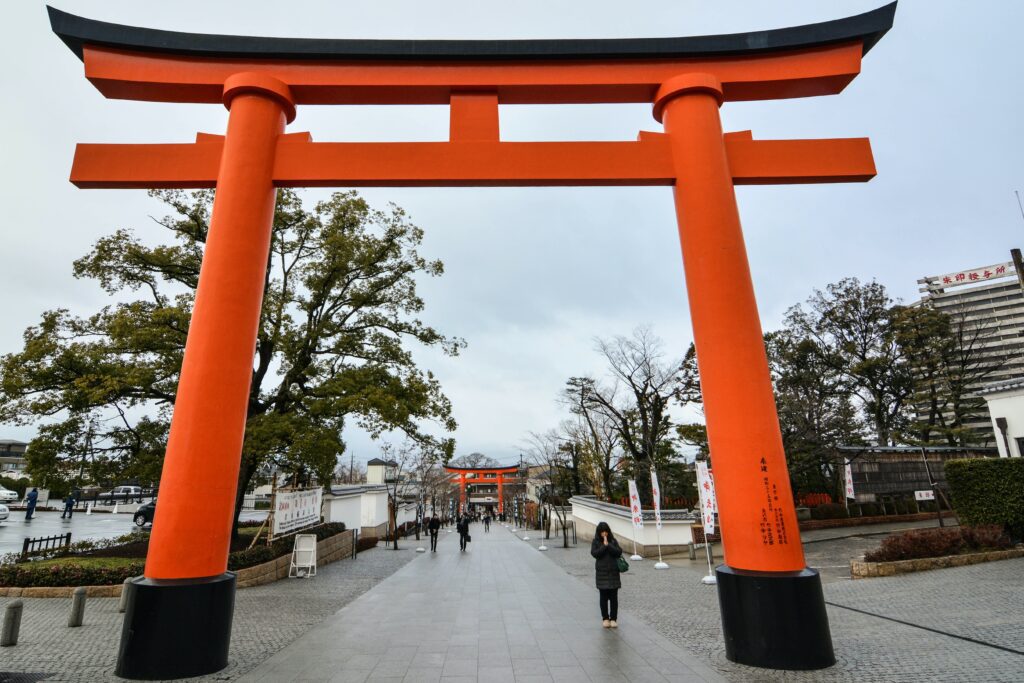
The torii gate is made up of two upright posts and a horizontal crosspiece, with the crosspiece often curved upward. The torii is traditionally made of wood, although modern torii gates may be made of other materials such as metal or concrete.
The torii gate is often painted red, which is a sacred color in Shinto. The color red is thought to represent life force, vitality, and energy. In Shinto practice, the torii gate is used as a symbol of purification, protection, and blessing. It is believed that passing through a torii gate purifies the soul and prepares one for spiritual communion with the gods.
Klook.comShimenawa: The Sacred Rope
Another important Shinto symbol is the shimenawa. Shimenawa is a rope made of rice straw that is used to mark off sacred spaces and objects. It is often seen draped around trees, stones, and other natural objects that are considered to be sacred.
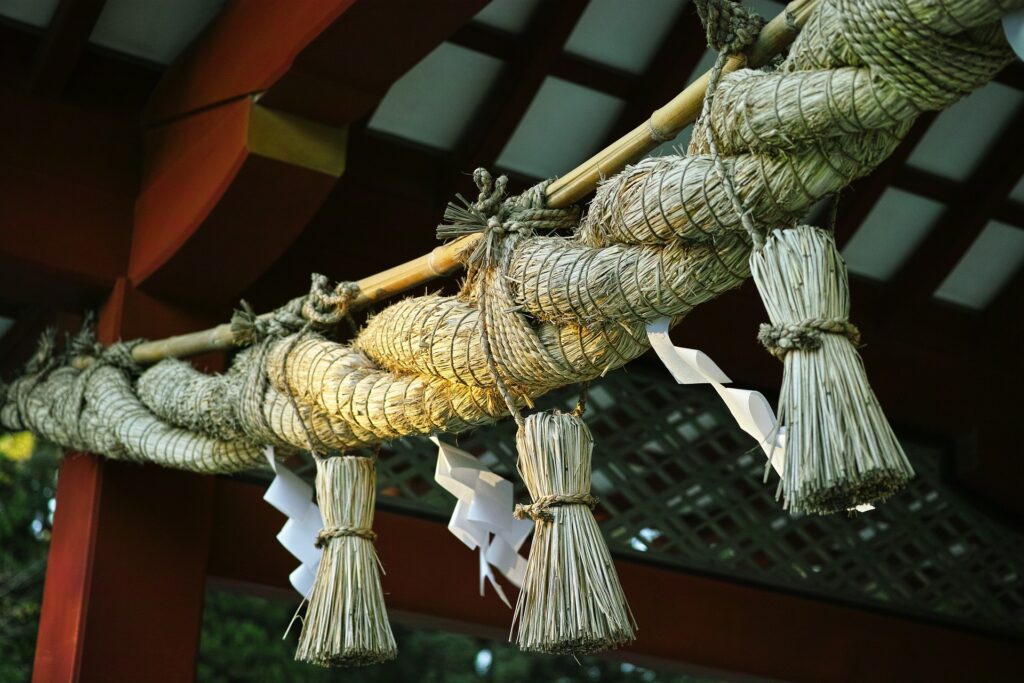
The shimenawa is believed to have the power to purify and protect sacred spaces and objects. It is thought to be a barrier that separates the sacred from the profane. In Shinto practice, the shimenawa is used to mark off the area around the kami, or the spirits, that are worshipped at Shinto shrines.
The shimenawa is often decorated with shide, which are paper zigzag streamers that represent lightning bolts. Shide are thought to have the power to purify and protect. Together, the shimenawa and shide form a powerful symbol of spiritual protection and purification.
Kami: The Spirits of Nature
In Shinto, the kami are the spirits of nature that are worshipped as gods. Kami can be found in rocks, trees, waterfalls, and other natural objects. They are believed to be powerful beings that can influence human affairs and protect the community.
The kami are not considered to be supernatural or transcendent, but rather immanent in the natural world. They are seen as both benevolent and malevolent, and are worshipped for their power to influence the world around us.
In Shinto practice, the kami are often represented by statues, amulets, and other objects. They are also believed to reside in natural objects, such as trees or rocks, that are considered to be sacred.
Shide: The Purifying Zigzag
Shide are zigzag paper streamers that are often seen hanging from Shinto shrines and other sacred objects. They are made by folding paper into a zigzag pattern and then cutting it into a long strip.
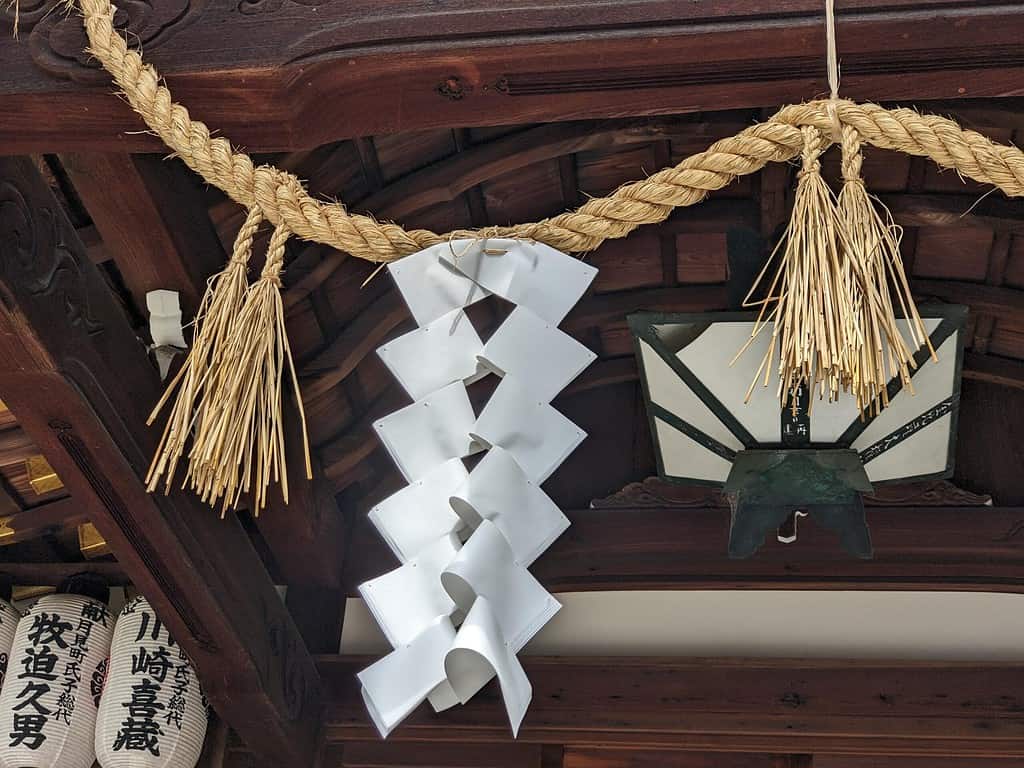
Shide are believed to have the power to purify and protect. They are often used in Shinto purification rituals to drive away evil spirits and purify the soul. Shide are also used as offerings to the kami.
Shide are often decorated with sacred symbols and colors, such as the color red, which is considered to be a sacred color in Shinto. The zigzag pattern of the shide is thought to represent lightning, which is seen as a symbol of the power of the gods.
Omamori: The Amulet for Protection
Omamori are amulets that are sold at Shinto shrines and other sacred sites in Japan. They are small, decorative pouches that contain a piece of paper or cloth with prayers or other sacred writings. Omamori are believed to provide protection and good luck to the person who carries them.
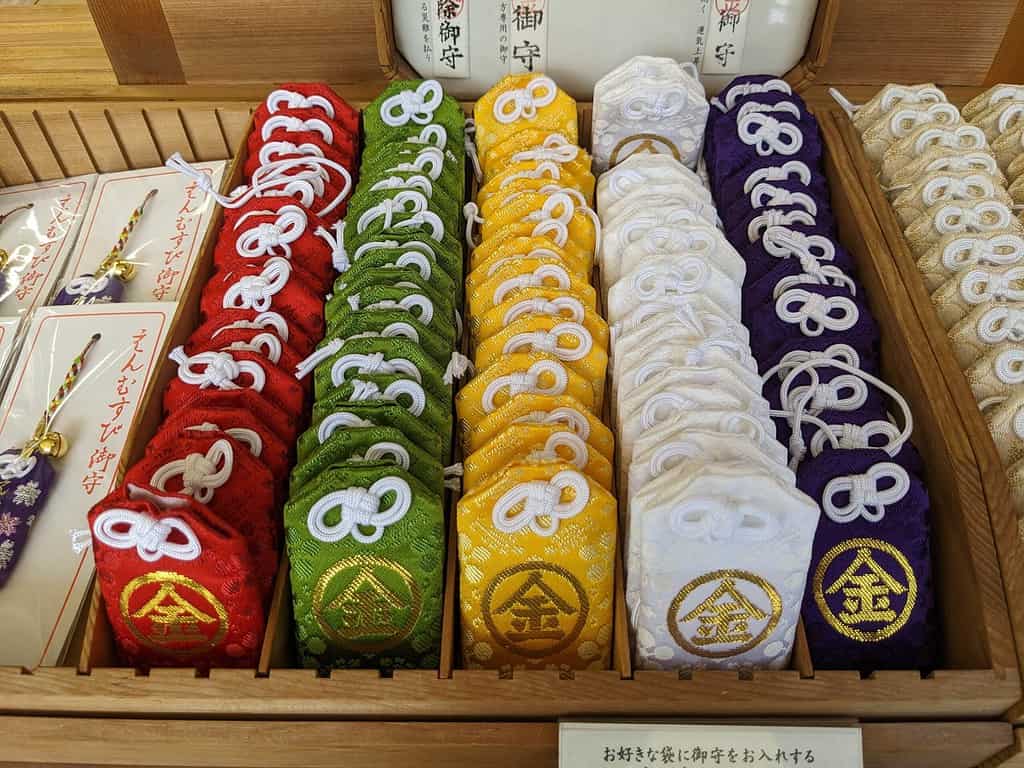
Omamori are often sold with specific purposes in mind, such as good health, success in business, or protection from harm. They can also be personalized with the name of the person who will carry the amulet.
In Shinto practice, omamori are often used as a way of asking for divine protection and guidance. They are carried in purses, wallets, or hung from car mirrors as a reminder of the presence of the kami and their protection.
Komainu: The Lion Dogs
Komainu are lion-like creatures that are often found guarding the entrances to Shinto shrines and other sacred sites in Japan. They are believed to have the power to protect against evil spirits and other malevolent forces.
Komainu are usually depicted in pairs, with one lion dog having its mouth open and the other with its mouth closed. The lion dog with its mouth open is said to be inhaling the breath of the kami, while the lion dog with its mouth closed is exhaling the breath.
Komainu are often depicted as fierce and powerful creatures, with the ability to repel evil and protect the sacred spaces they guard. They are also seen as symbols of loyalty and devotion.
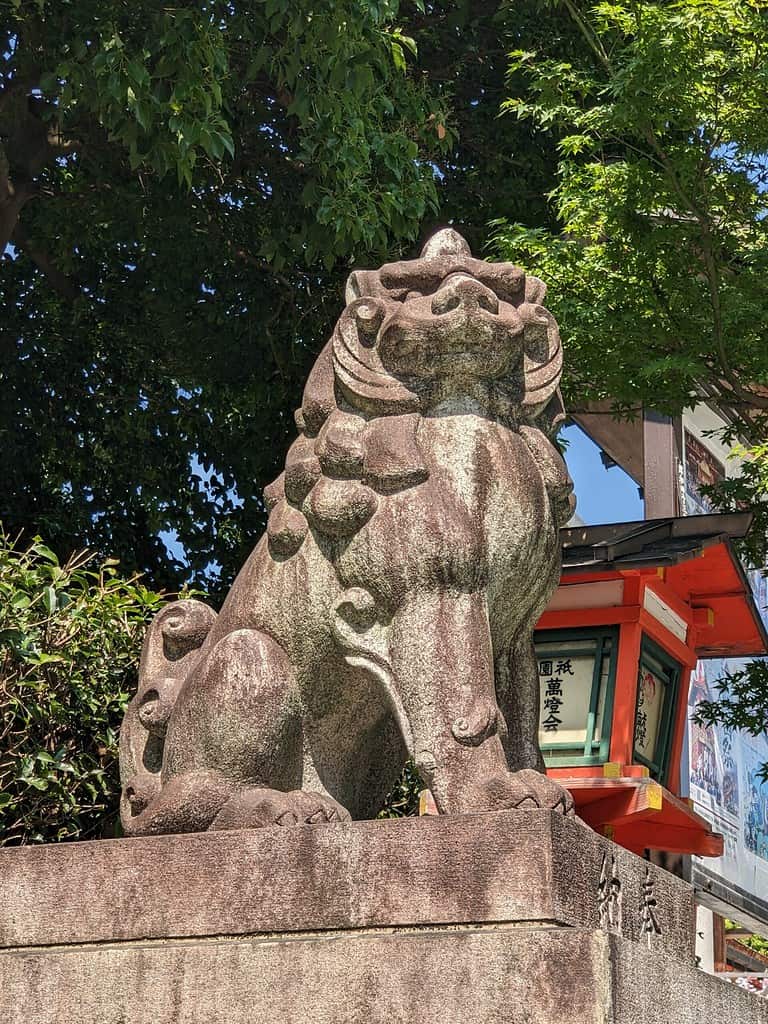
Inari: The God of Agriculture
Inari is a Shinto deity that is associated with agriculture, fertility, and prosperity. Inari is often depicted as a fox or as a human figure holding a sheaf of rice. Inari is worshipped by farmers and others who depend on agriculture for their livelihood.
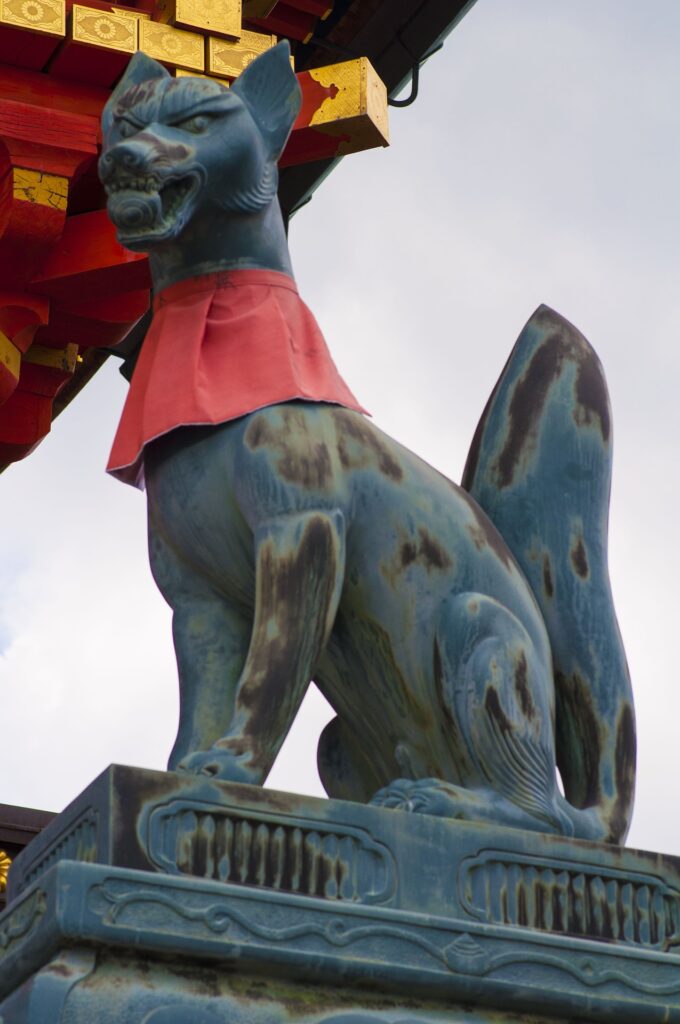
Inari shrines can be found throughout Japan and are often decorated with images of foxes. Foxes are seen as messengers of Inari and are believed to have the power to bring good luck and prosperity.
In Shinto practice, Inari is often asked for blessings of fertility, abundance, and success in agriculture. Offerings of rice, sake, and other food items are often made at Inari shrines in hopes of receiving these blessings.
Ema
Ema refers to small wooden plaques or tablets commonly found in Japanese shrines. These ema are traditionally used as a means for visitors to communicate their wishes or prayers to the kami, the deities of Shinto. The word “ema” itself can be translated as “horse picture,” as these tablets were originally adorned with images of horses, which were considered sacred in ancient Japan.
When someone visits a Shinto shrine, they can purchase an ema from the shrine’s gift shop or office. The ema typically have a blank side and a side with a printed image or design related to the specific shrine. Visitors write their wishes, prayers, or gratitude on the blank side of the ema using a brush or pen. Common wishes include good health, success in exams or work, finding love, and other personal aspirations. Once the message is written, the ema is then hung or tied onto designated racks or strings within the shrine grounds, where the kami can receive and respond to the wishes.
The act of offering an ema serves as a tangible expression of one’s intentions and desires, creating a connection between the visitor and the divine. It is believed that the kami can read the messages written on the ema and grant the wishes if they deem it appropriate. The ema, therefore, represent a form of communication, a means for individuals to seek guidance, blessings, or support from the spiritual realm in the context of Shinto belief and practice.
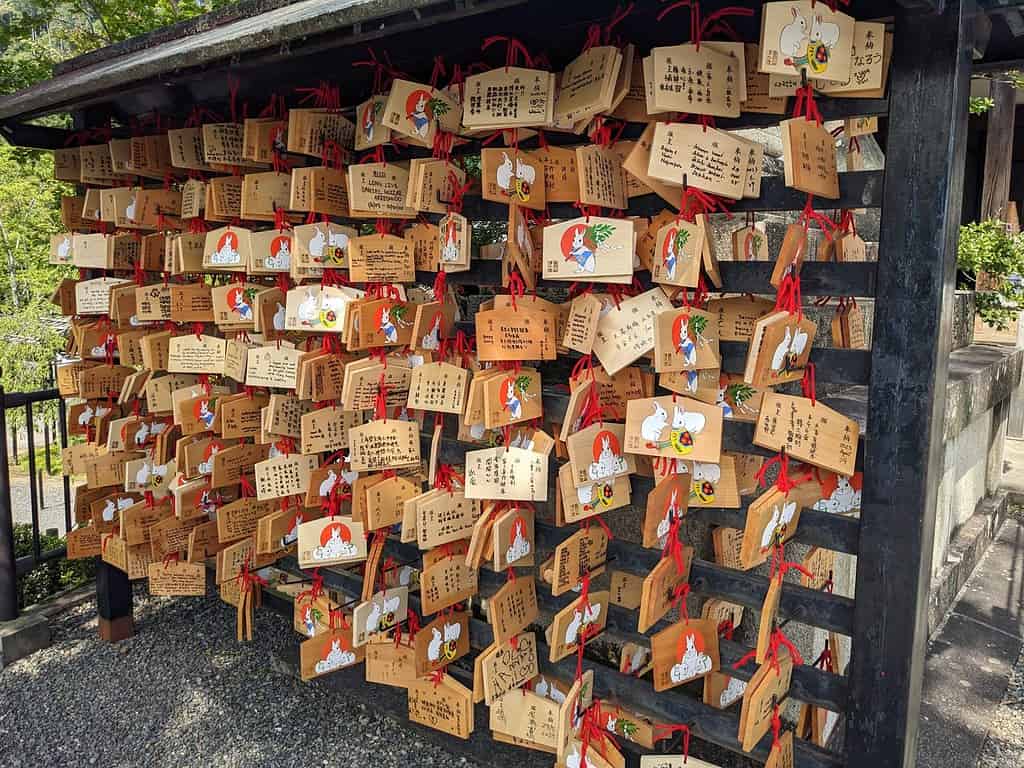
Omikuji
Omikuji is a form of divination in Japanese Shinto and Buddhist traditions. It refers to small strips of paper that contain written fortunes or predictions. The process of receiving an omikuji involves shaking a cylindrical container filled with numbered sticks until one stick emerges. The number on the stick corresponds to a specific drawer or compartment from which an omikuji can be drawn.
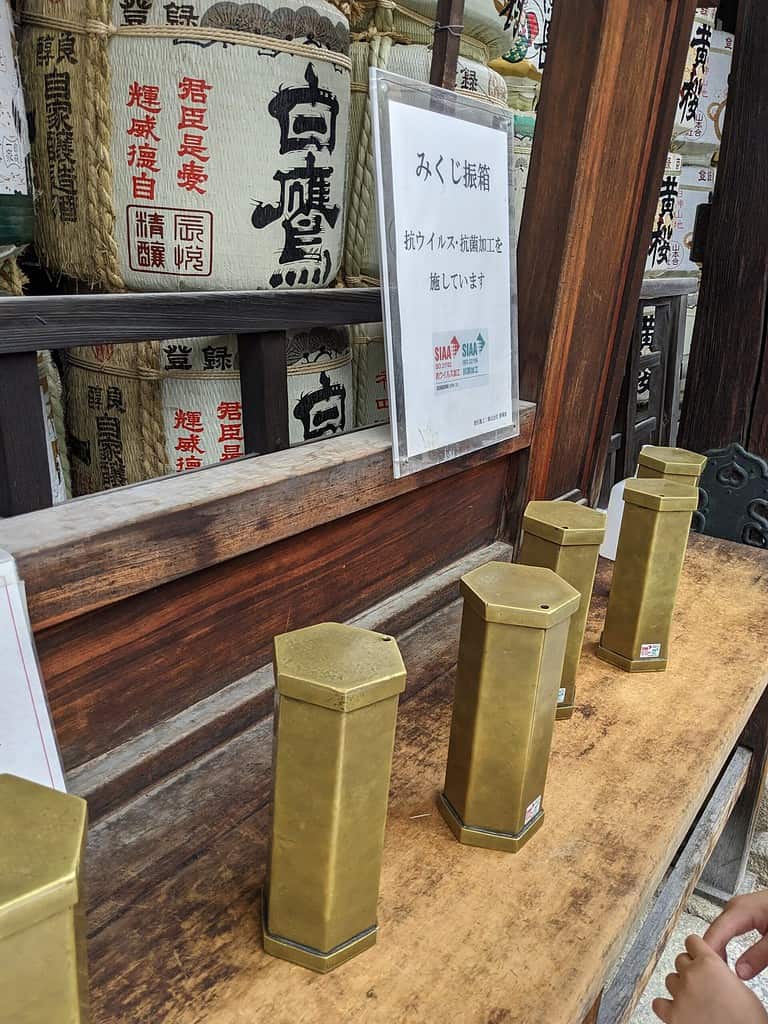
When a person receives an omikuji, they unroll the paper to read their fortune. The fortunes range from very auspicious (daikichi) to very inauspicious (daikyo), with varying degrees in between. The omikuji may provide predictions or advice related to various aspects of life, such as health, relationships, career, or travel. If the fortune is negative or unfavorable, it is common practice to tie the paper onto a designated spot, such as a tree or metal stand, at the shrine or temple. This act symbolizes leaving behind the negative fortune and seeking spiritual intervention to improve one’s future.
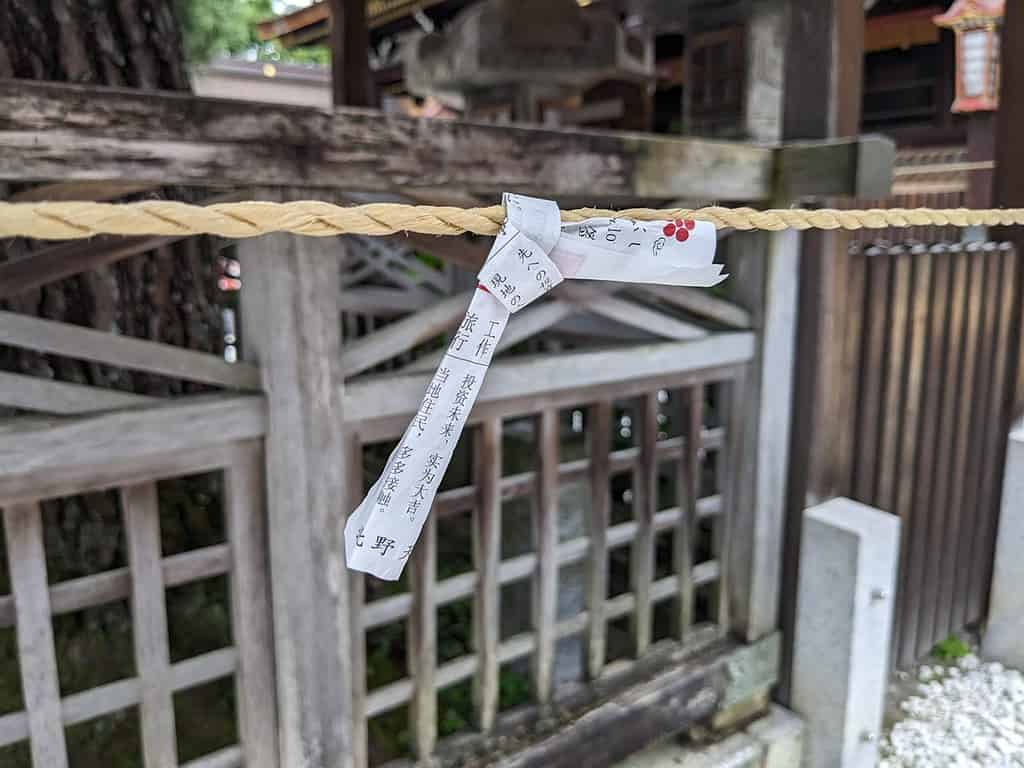
Omikuji is often regarded as a means of guidance or insight from the divine realm. It is believed that the omikuji is chosen by the deities or spiritual forces, and the fortune received can serve as a source of reflection, inspiration, or caution. People may also perform additional rituals or prayers at the shrine or temple to seek blessings or mitigate any potential negative outcomes indicated by the omikuji. Overall, omikuji holds significance in Shinto and Buddhist practices as a way to engage with the spiritual realm and seek guidance for one’s future endeavors.

Planning a trip to Japan?
Final Thoughts about Shinto Symbols
Shinto is a religion that is deeply rooted in the culture and history of Japan. It places great importance on nature, ancestors, and spirits. Shinto has a wide range of symbols and symbolism that are used to represent various concepts and ideas.
Some of the most important Shinto symbols include the torii gate, shimenawa, kami, shide, omamori, komainu, ema, omikuji, and Inari. These symbols are used to represent purification, protection, guidance, and prosperity.
Whether one is a devout Shinto follower or simply interested in learning more about Japanese culture and religion, understanding these symbols and their meanings can provide insight into the rich and fascinating world of Shinto practice.

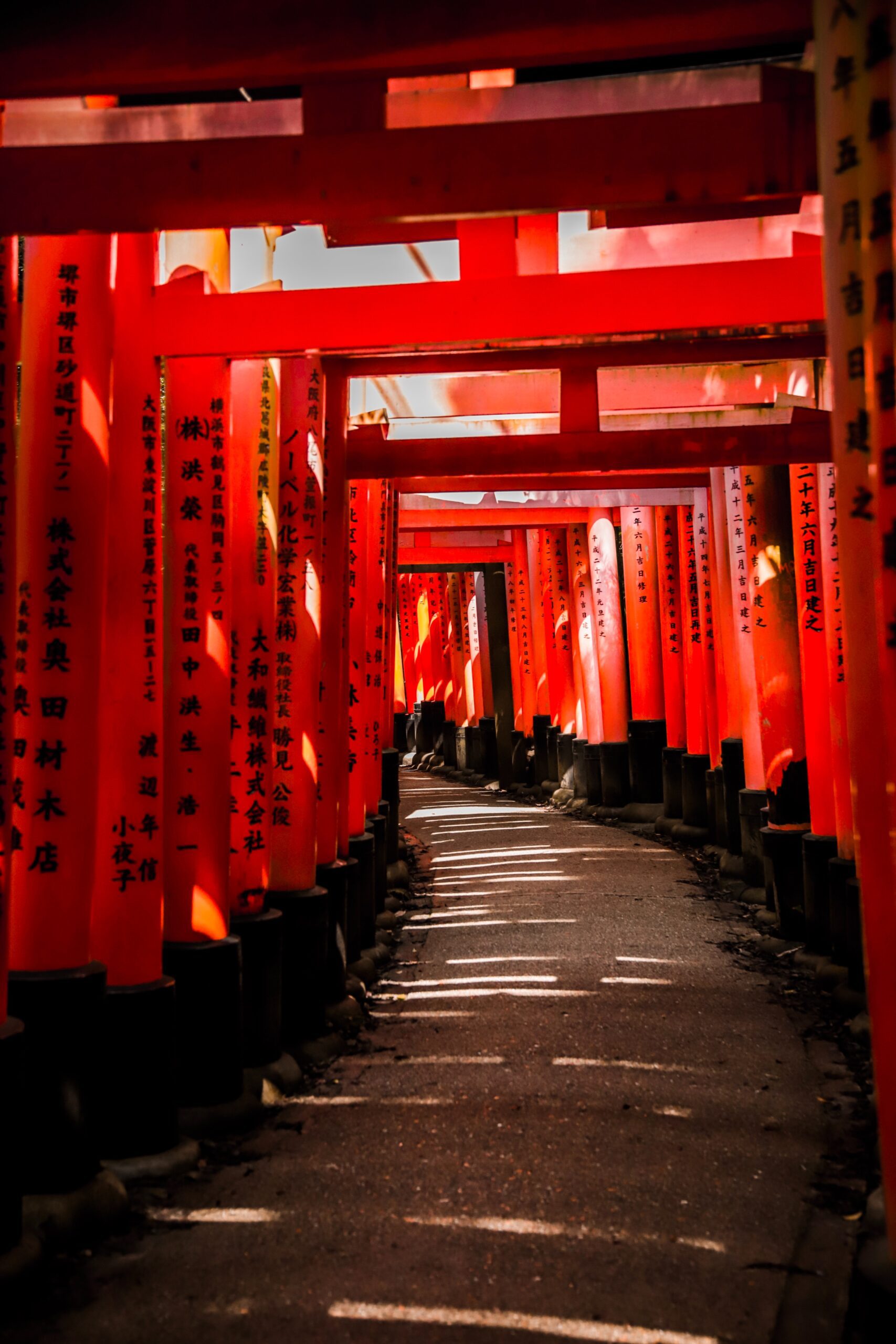
9 thoughts on “Shinto Symbols – Understanding the Symbolism in Shinto Practice”